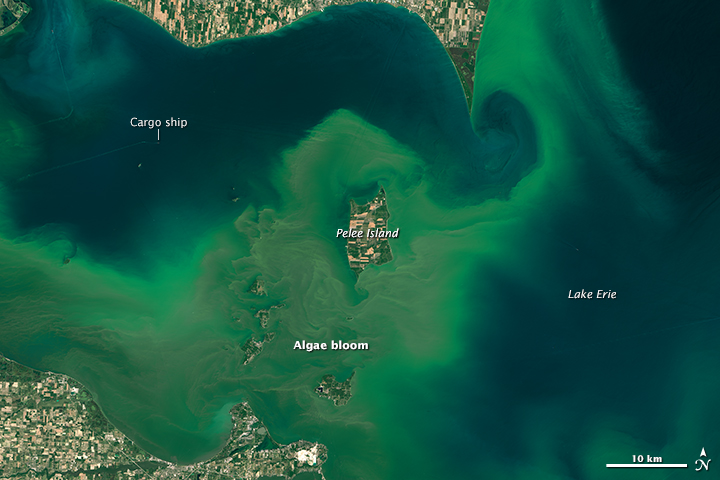
Disappointing Action Plans to Address Lake Erie’s Algae Blooms
Have you heard the news yet? According to NOAA, we’re expecting to see a significant algae bloom on Lake Erie this summer.
This is bad news for anyone who wants to use the lake for swimming, fishing, or boating as stinky mats of potentially harmful algae can severely limit enjoyment of those activities. Depending on how things go (which no one can predict at this time), the algae blooms could even impact drinking water like it did in 2014 when almost 500,000 people in Toledo, OH and Pelee Island couldn’t use their water for days because of the toxic nature of the algae.
Environmental groups, including Freshwater Future, have been vocal for years about the need for all governments around Lake Erie to take action to tackle algae blooms. The blooms are mostly caused by phosphorus runoff pollution, with the largest source coming from industrial farms when rains and spring thaw wash excess manure and fertilizers into local streams and rivers that feed the lake.
In the 2012 Great Lakes Water Quality Agreement, the U.S. and Canadian governments promised to finalize action plans that would meet science-based phosphorus reduction targets by February 2018. As that deadline approaches, we are starting to see some of those plans in draft form. Here is a summary of what we know about the timelines for those plans:
- The Canada-Ontario draft action plan was released for a 75-day public comment period on March 10, 2017. Public comments are currently being reviewed and a refined final action plan is anticipated before the February 2018 deadline.
- Ohio intends to release a draft action plan in October 2017. We have heard they intend to ask for public input.
- Pennsylvania released a draft action plan on June 12, 2017 and accommodated a 30-day public comment period.
- Indiana intends to release a draft plan in July 2017. We have no information about their public consultation plans.
- Michigan released its draft action plan on June 13, 2017 for a 30-day public comment period that ended July 14th.
- New York is not required to develop an action plan, but they are voluntarily working on watershed restoration initiatives that will reduce runoff pollution to the eastern basin.
- The US EPA is working together with four agencies and the five US states to put together an umbrella plan. They suggest a draft will be ready for public comment in July.
The timelines above are government estimates only and could easily change.
Unfortunately, the plans that we’ve seen so far fall far short of our expectations. The actions outlined in each plan will not adequately curb the runoff pollution, particularly from the agricultural sector.
Freshwater Future is working with both Canadian and US environmental organizations, farming organizations, conservation organizations and governments to advocate for strong rules that protect Lake Erie and other Great Lakes.
You can help!